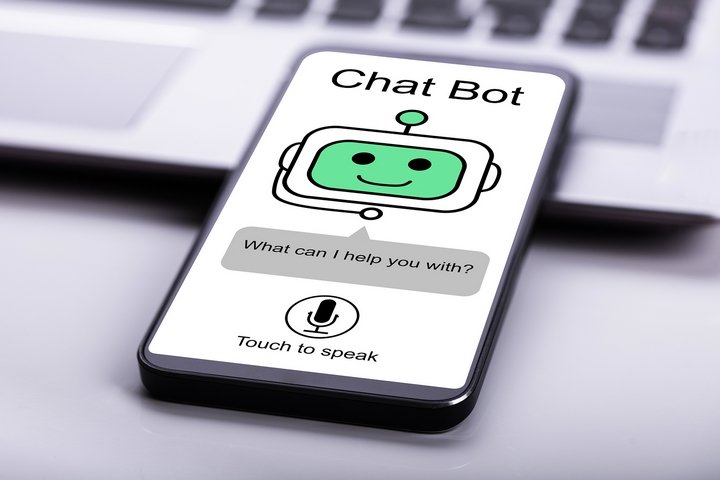Risks and Dangers of Unsupervised Teen Internet Use?
Teens today grow up with the internet at their fingertips – a world of information, social connection, and entertainment. Yet with all its benefits, the online world also harbors serious pitfalls for an unsupervised teenager. Research confirms that the internet offers an “almost endless supply of information and opportunity” for kids. However, there can be real risks and dangers for an unsupervised child In fact, modern surveys find that two-thirds of youths say their parents set “no rules” on media use, meaning many teens are left to roam the digital realm alone. As a grandparent, you may not be tech-savvy or have grown up with these issues, but your guidance and wisdom are more crucial than ever in helping your grandchild navigate this new world safely.
The Impact of Unsupervised Internet Use on Teens’ Development
It’s easy to think of the internet as harmless fun, but during the teen years, how they use it can profoundly affect their mental and emotional growth. Adolescence is a sensitive period when the brain is still developing impulse control and emotional regulation. Heavy, unsupervised internet use can exploit those vulnerabilities – for example, the “like” buttons and endless scrolling of social media are designed to hook developing brains Teens’ desire for peer approval is high, while their self-control is still maturing. It’s no surprise, then, that excessive screen time has been linked to increased anxiety, depression, and poor sleep in adolescents When teenagers spend too much time in virtual spaces, they may neglect real-life activities (homework, sports, or even sleep), and this imbalance can hurt their health and school performance ([ Your Child’s First Phone: Are They Ready? – [HealthyChildren.org] In short, the adolescent brain is impressionable, and what teens encounter online – good or bad – can shape their well-being and view of the world.
On the positive side, the internet can educate and connect young people, but the lack of supervision is what turns a tool into a threat. A child left alone online might lack the judgment to filter out harmful content or interactions. Without an adult’s guidance, they can easily fall into traps that their still-maturing minds are not prepared to handle. The following are some of the significant risks associated with unrestricted internet access for teenagers.
Key Risks of Unrestricted Internet Access
Exposure to Inappropriate or Explicit Content
One click on the wrong link, and a curious teen could land in a digital minefield of disturbing material. Young people can inadvertently stumble onto violent, sexual, or otherwise age-inappropriate content. This might include pornography, graphic violence, hate speech, or self-harm encouragement. Such content can be deeply upsetting or confusing for a child who isn’t emotionally ready for it. Medical experts warn that repeated exposure to explicit media can desensitize kids or skew their understanding of healthy relationships and sexuality. Imagine a 13-year-old encountering adult pornography or extremist propaganda – without context or support, the impact on their developing psyche can be profound. This is why filtering and supervision matter: to help shield teens from content that could overwhelm or harm them emotionally.
Online Predators and Strangers
The internet allows people to masquerade behind fake profiles and usernames, which means kids online can’t be sure who’s on the other end. An unsupervised teenager might think they’re chatting with a new friend, but it could be a predator in disguise. Online predators often lurk in chat rooms, gaming platforms, and social media, grooming youngsters by pretending to share their interests or problems. They exploit the anonymity of the internet – as one psychiatric association notes, a child “will not know if they are ‘talking’ with another child or a child predator pretending to be a teen”. The risks here are frightening: predators may coerce kids into sharing personal information, sending inappropriate photos, or even meeting in person. Law enforcement and child safety experts report that predators skillfully “befriend” vulnerable kids online and build trust, only to exploit it. For a grandparent, it’s chilling to realize that the stranger danger we warned about at the park now extends to your grandchild’s bedroom via WiFi. Unmonitored, a teen might not recognize the red flags until it’s too late.
Social Media Pressures and Mental Health
Many teens practically live on social media – posting selfies, watching influencers, and chatting with friends. But these platforms can be a double-edged sword. Unfiltered social media use exposes teens to intense peer pressure and a curated highlight reel of others’ lives. They may start to measure their self-worth in “likes” and comments, which can fuel anxiety or low self-esteem. The American Psychological Association warns that unsupervised social media use means kids are more likely to encounter harmful content or features. This could be cyberbullying, body-shaming images, or dangerous viral “challenges.” More than half of teens show at least one sign of social media dependency or addiction, and heavy use has been linked to declines in life satisfaction for specific ages. Moreover, the constant distraction of notifications can disrupt concentration and sleep, ultimately affecting academic performance and mood. Without adult guidance, teens might not have the resilience or perspective to navigate these pressures. A funny meme or trend can quickly turn into harmful behavior if a young person doesn’t recognize when to step back.
Hateful Content and Online Radicalization
One of the more insidious risks online is the spread of extremist or hateful ideologies. Through videos, forums, or social media, teens can be exposed to hate speech or radical propaganda. In the past, extremists might hand out pamphlets on a street corner – now they use YouTube, TikTok, or obscure chat groups to target impressionable youth. Teenagers and young people are at particular risk of being groomed into extremist beliefs: they’re often searching for identity and belonging, which manipulators know how to exploit. For example, a teen who feels isolated might stumble on a forum that initially offers friendship, but slowly pushes hateful worldviews or conspiracy theories. The U.K.’s counter-radicalization experts note that extremists “have the means to target, connect, and communicate with people vulnerable to radicalisation” online. It’s a dangerous path – one that can lead a young person toward violence or severe misinformation. The thought of your grandchild absorbing hate or talking to extremist recruiters is alarming, but it’s a reality in the digital age. This is another area where a watchful eye and open conversations are critical.
Signs Your Grandchild May Be Struggling Online
How can you tell if your grandchild’s internet use is becoming a problem? There are often warning signs in their behavior or mood. Pay attention to these red flags that might suggest a child is overwhelmed or not yet ready for full online freedom.
- Secrecy and Withdrawal: If your grandchild is suddenly very secretive about their online activities – for instance, quickly minimizing windows, using their device away from others, or refusing to talk about what they’re doing – they might be hiding something inappropriate. Likewise, watch if they withdraw from family or friends, spending all their time alone on a screen. An outgoing child who becomes isolated may become overly absorbed in the online world.
- Emotional Ups and Downs: Mood swings can be normal in teens, but be alert if you see unexplained anger, sadness, or anxiety right after they’ve been online. For example, they may finish a gaming or social media session and appear visibly upset or on edge. Excessive irritability or depression might indicate cyberbullying, exposure to distressing content, or social media comparing that’s hurting their self-esteem.
- Changes in Sleep or Habits: Unrestricted internet use at night can lead to a teen staying up into the wee hours. If they’re often exhausted, have trouble sleeping, or their eating habits change, it could be due to late-night screen time or stress from online interactions. A child who can’t put the phone away – even to eat or sleep – may be developing an unhealthy dependency.
- Overstepping Boundaries or Poor Judgment: A key sign of immaturity with technology is when a child cannot adhere to limits or exhibits poor online judgment. For example, do they ignore homework and chores because of internet use? Do they “act before thinking” online – sharing personal info or talking to strangers as if everyone on the internet is a friend? If they consistently break agreed screen-time rules or seem naive about online strangers (maybe boasting about a “new friend” you’ve never heard of), they likely need more supervision.
- Reluctance to Discuss Online Life: Perhaps most importantly, if a child refuses to talk about what they do online or gets defensive when asked, it’s a sign they might be in over their head. A teen who is scared to confide in you about something that happened online – or suddenly doesn’t want to use a favorite app at all – might have encountered a threat or trauma. Trust your instincts: drastic changes in how a young person uses the internet (or avoids it) are worth gentle investigation.
Remember that any one of these signs alone isn’t proof of a serious problem, but they are indicators to take note of. As a grandparent, you have the advantage of life experience; you might notice shifts in behavior that others overlook. If you do spot these patterns, it’s time to step in with care and support.
How Grandparents Can Help Keep Teens Safe Online
You might feel a bit out of your depth with all this technology, but don’t worry. You don’t need to be a tech expert to help guide your grandchild online. The most important skills are the same ones you’ve used raising children for years: communication, common sense, and setting boundaries. Here are some simple, actionable ways you can make a difference in your grandchild’s digital life:
- Get Informed and Involved: Start by learning the basics of what your grandchild does online. Ask them (and their parents) about the apps, games, or websites they use most. You can even have your grandchild teach you a bit about their favorite game or social media platform – kids love sharing what they enjoy, and you’ll gain insight into their online world. The goal isn’t to spy, but to gain a deeper understanding. Stay curious and keep up with major online trends and issues (for example, being aware of popular apps or dangerous challenges) The more you know, the better you can guide them. And if something seems confusing, don’t hesitate to ask their parents or check reputable resources for advice. Knowledge is power, even in grandparenting!
- Set Clear Ground Rules (and Stick to Them): Work with your grandchild’s parents to establish consistent rules for internet use. Kids thrive on consistency – they should know the same rules apply at Grandma’s house as at home. Decide things like: What hours of the day can devices be used? Which websites or apps are off-limits? And where can devices be used? (For example, you might require that laptops stay in the living room, not bedrooms, or no phones at the dinner table.) By setting these boundaries, you minimize their exposure to harmful content and encourage healthy habits. If your grandchild has no existing “digital boundaries,” gently introduce some. You could even create a simple family internet agreement together, so they feel involved in the process. The key is to be firm but fair – once rules are set, enforce them consistently. If you say “no internet after 9 PM,” mean it. Consistent rules send the message that you care about their safety, both online and offline.
- Use Parental Controls and Privacy Tools: You don’t have to watch over a teen’s shoulder every second manually – technology can help. Take advantage of parental controls on devices, Wi-Fi routers, and apps to filter out adult content, set time limits, and monitor activity. For instance, you can set up a child or teen profile on your tablet that blocks mature sites, or use software like Google’s Family Link to see what apps they’ve been using. Ensure that privacy settings on social media are tightened so that only friends can view their posts. It’s also wise to put passwords on any devices you own so that grandchildren need to ask before using them. These tools aren’t foolproof, but they are a helpful first line of defense. Think of it like putting locks on doors and fences around a pool – sensible precautions for safety. Set them up once, and they’ll quietly help protect your grandchild even when you’re not hovering nearby.
- Keep Communication Open and Judgment-Free: One of the most powerful things you can do is talk regularly with your grandchild about their online life. Make it a casual, routine topic of conversation, not a one-time lecture. Ask questions like, “Have you seen anything cool or weird on the internet this week?” or “What games are your friends into lately?”. Listen more than you speak, and try not to react with shock or anger if they mention something troubling – first, hear them out. The goal is for your grandchild to feel safe telling you about their experiences, good or bad, without fear of being judged or immediately punished. Psychologists emphasize that when kids know they can talk to a trusted adult, they’re much more likely to come forward if something bad happens online. So, establish yourself as that trusted confidant. If they do confess a mistake (like chatting with a stranger or seeing a nasty video), stay calm. Thank them for sharing this information, and work together to find a solution. Regular check-ins – say a weekly chat about what’s new online – can strengthen your bond and nip problems in the bud.
- Teach and Reinforce Online Safety Basics: The same commonsense rules you taught your children about strangers and privacy apply online. Have frank discussions about not sharing personal information online (no full name, address, phone number, school name, etc. on public profiles). Ensure they never agree to meet an online “friend” in person without a parent’s approval and presence.. Explain that a “friend” in a game or chat room is still a stranger – people can pretend to be anyone online. Encourage your grandchild to think before they post or text: if they wouldn’t want the whole world (or Grandma!) to see something, they shouldn’t share it. Also, discuss tricky situations: What if someone online says mean things? What if they receive an odd photo or request? Let them know they can always come to you or their parents if something doesn’t feel right. By instilling these basic cyber-safety habits (just as you once taught them to look both ways before crossing the street), you empower your grandchild to make smarter choices when they’re online alone.
- Stay Alert and Supportive: Finally, keep a gentle eye on your grandchild’s digital behavior. This doesn’t mean prying into every message, but do be aware of how they’re acting. If you notice any of the warning signs we discussed – mood changes, secrecy, slipping grades, etc. – don’t ignore them. Bring up your concerns lovingly: “I’ve noticed you seem upset after using your phone, is everything okay?” Sometimes just opening that door can lead them to share a problem. Support them in finding solutions: maybe it’s blocking a bully, adjusting privacy settings, or taking a break from a toxic app. Work together with their parents as a team; share your observations and strategize on the best way forward (this could involve contacting the school or even authorities in severe cases, such as predator contact). Remember, as a grandparent, you have a special role – you’re an authority figure, but often seen as more approachable than a parent. Use that to your advantage to protect and mentor your grandchild. Your steady presence and unconditional care can serve as a safety net as they navigate the ups and downs of the online world.
Conclusion: Your Influence Matters More Than Ever
Navigating the internet’s perils may feel daunting, but take heart: your love, attention, and common sense are incredibly valuable tools. Today’s teens may be experts with technology, yet they still rely on guidance from caring adults to make informed choices. The fact that you’re concerned and educating yourself (by reading articles like this) shows you’re on the right track. By understanding the psychological impacts of unsupervised internet use, recognizing the risks, watching for warning signs, and engaging with your grandchild, you become a powerful ally in their digital journey.
In many ways, keeping kids safe online isn’t so different from keeping them safe offline – it’s about staying informed, setting limits, and being there for them. You’ve kept children safe through many stages of life; the “virtual” stage is just a new challenge. So have those conversations, set those boundaries, and don’t be afraid to be the “bad guy” by saying no when it’s needed. Your grandchildren may roll their eyes at your tech questions or complain about the rules, but deep down, your involvement gives them a sense of security. As one national child safety center put it, open communication and guidance are the most effective tools we have to combat online dangers.
The digital world is here to stay, and it will keep evolving. By actively stepping into your grandchild’s online world, you’re not only protecting them – you’re also sharing in something important to them, which can strengthen your relationship. In the end, that combination of protection and connection is what every child needs. With your help, your grandkids can reap the benefits of the internet while avoiding its darkest traps. And years from now, they’ll thank you for it, even if they might not realize it today.
______________________________________________________________________________________
Sources: The insights and recommendations above are drawn from child psychology experts, medical associations, and research on youth internet use. Key references include the American Academy of Child and Adolescent Psychiatry’s guidelines on children online ( Internet Use in Children ) ( Internet Use in Children ), findings summarized by the American Psychological Association on social media’s impact (Keeping teens safe on social media research by isum (pdf) – CliffsNotes) (Keeping teens safe on social media research by isum (pdf) – CliffsNotes), the U.S. Surgeon General’s advisory on youth social media use (Social Media and Youth Mental Health) (Social Media and Youth Mental Health), and expert advice on practical online safety measures for families (Keeping grandchildren safe online over holidays | Internet Matters) (Keeping grandchildren safe online over holidays | Internet Matters). Together, these sources paint a clear picture of both the dangers and the proactive steps that caring adults can take to help guide teens in the digital age.
Footnotes
- American Academy of Child and Adolescent Psychiatry, “Children and the Internet,” AACAP.org ↩
- Kidsburgh.org, “Parenting in the Digital Age.” ↩
- U.S. Department of Health and Human Services, “Youth Mental Health.” ↩
- American Psychological Association, “The Effects of Social Media on Youth.” ↩
- CliffsNotes, “Teen Social Development.” ↩
- National Institutes of Health, “Excessive Screen Time and Its Psychological Effects.” ↩
- HealthyChildren.org, “Screen Time and Teen Well-being.” ↩
- AACAP.org, “Teen Exposure to Explicit Content.” ↩
- American Academy of Pediatrics, “Effects of Inappropriate Content on Children.” ↩
- U.S. Safe Internet Practices, “Keeping Kids Safe Online.” ↩
- AACAP.org, “Online Predator Awareness.” ↩
- InternetMatters.org, “Signs of Online Grooming.” ↩
- American Psychological Association, “Teen Social Media Addiction.” ↩
- Health.gov, “Mental Health and the Internet.” ↩
- ActEarly.UK, “Online Radicalization in Teens.” ↩
- SilverSurfers.com, “Protecting Teens from Extremist Content.” ↩
- eSafety.gov.au, “Internet Safety for Families.” ↩
- InternetMatters.org, “How to Spot the Signs of Internet Overuse.” ↩












